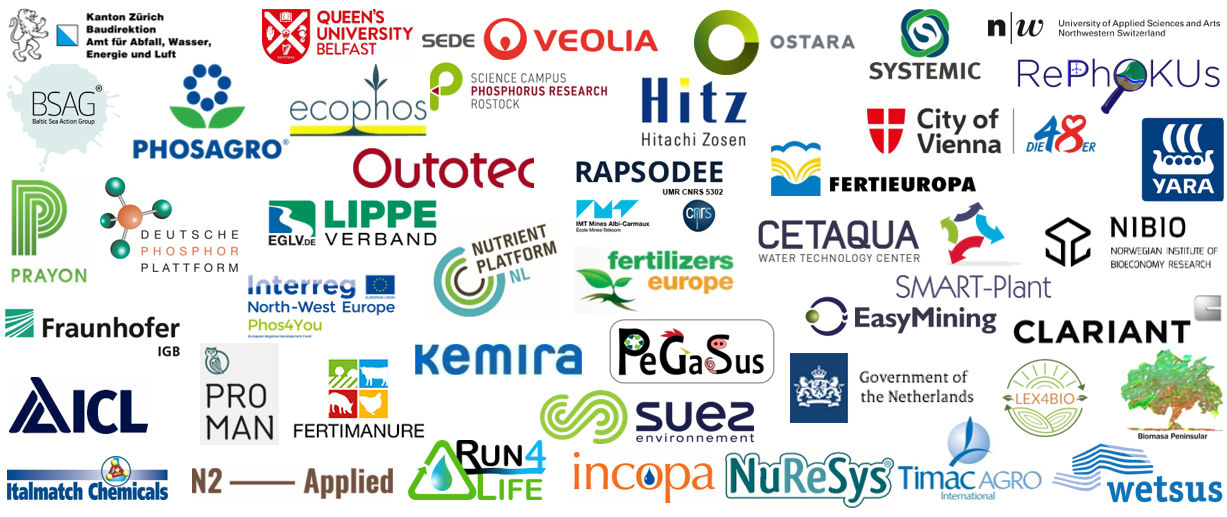Newsletter about nutrient stewardship - European Sustainable Phosphorus Platform (ESPP)
Please subscribe www.phosphorusplatform.eu/Subscribe
Link to www.phosphorusplatform.eu/eNews044
Download as PDF
Events
Webinar on iron phosphate chemistry applied to phosphorus stewardship
Environmental efficiency of wastewater treatment plant configurations
Postponement ESPC4 and PERM 31st May – 2nd June 2021
Rescheduling ... RAMIRAN 2020, Systemic, ESNI
Consultations for your input
Urgent: Consultation open on R&D to support the Green Deal
Urgent: Input requested for by-products in EU Fertilising Products Regulation
ESPP, SuMaNu, Water Europe input on Circular Economy Action Plan
Input your ideas for a European nutrient strategy
EU Farm to Fork Strategy
EU Integrated Nutrient Management Action Plan
Industry news
Prayon acquires Ecophos process technology
Research and demonstration
FERTIMANURE now online
WATER MINING P-recovery from iron
REPARES project launched: antibiotic resistance
NITROMAN
Polyphosphate biology and methane
ESPP members
Events
Webinar on iron phosphate chemistry applied to phosphorus stewardship
This workshop remains fixed 13-14 July, 2020, but the schedule and event design is completely revised for webinar. Presentations/papers will be available to participants before the event and the three web sessions will concentrate on discussion and questions, completed by an online forum. Themes are: Iron phosphorus interactions in natural systems and in wastewater, iron and phosphorus crop availability, iron for P-removal from aquatic systems and P-recovery from iron-containing waste streams. Register now: limited to 100 participants.
Programme and register: https://www.eventbrite.co.uk/e/iron-phosphate-chemistry-applied-to-phosphorus-stewardship-and-p-recovery-tickets-96759011809
Environmental efficiency of wastewater treatment plant configurations
Kemira webinar, 16th June 14h00 CET. Presentation and discussion of a new study by IVL Swedish Environmental Research Institute comparing three different wastewater treatment plant configurations: pre-precipitation, simultaneous precipitation, and biological phosphorus removal. Differences in environmental efficiency in terms of carbon footprint, energy balance, impacts of stricter effluent limits.
Kemira and members of INCOPA (European Inorganic Coagulants Producers Association) have contributed to this study. Link for registration or to receive the webinar recording afterwards: REGISTER
Postponement ESPC4 and PERM to 31st May – 2nd June 2021
Given the development of the international corona virus situation, and after re-discussion with the venue hotel and the Belvedere Palace, Vienna, we have decided to postpone ESPC4 and PERM (4th European Sustainable Phosphorus Conference and European Phosphorus Research Meeting) from June 2020 to Vienna 31st May – 2nd June 2021 https://www.phosphorusplatform.eu/espc4
Rescheduling ... RAMIRAN 2020, Systemic, ESNI
The manure and organic resources recycling conference, RAMIRAN, is rescheduled (provisionally) to 20-23 September 2021, Cambridge, UK.The SYSTEMIC workshop on nutrient recovery from anaerobic digestion and ESNI (European Sustainable Nutrient Initiative) are rescheduled to 26 – 27 October 2020, Brussels
Ramiran: www.ramiran2020.org
ESNI and SYSTEMIC workshop on Eventbrite
Consultations for your input
Urgent: Consultation open on R&D to support the Green Deal
EU Green Deal Call consultation, open to 3rd June https://ec.europa.eu/info/research-and-innovation/strategy/european-green-deal/call_en
Urgent: Input requested for by-products in EU Fertilising Products Regulation
“Technical proposals for by-products as component materials for EU Fertilising Products. Background document.” European Commission JRC, 24th April 2020 (42 pages) available here. Comments to by latest 4th June.
ESPP, SuMaNu, Water Europe input on Circular Economy Action Plan
European Committee of Regions Stakeholder Consultation "New Circular Economy Action Plan" https://cor.europa.eu/en/events/Pages/New- Circular-Economy-Action-Plan.aspx
Input your ideas for a European nutrient strategy
Document online – send us your input by 30th June 2020 http://www.phosphorusplatform.eu/regulatory
EU Farm to Fork Strategy
EU Integrated Nutrient Management Action Plan
EU Farm-to-Fork Strategy, COM(2020)381, 20th May 2020
Industry news
Prayon acquires Ecophos process technology
Prayon press release 6th May 2020.
Research and demonstration
FERTIMANURE now online
FERTIMANURE (Horizon 2020) https://www.fertimanure.eu/en/the-project-s-response
WATER MINING P-recovery from iron
* To our understanding, the Everglades Foundation George Barley Prize never delivered the 10 million dollar “prize” promised, because the conditions fixed by the organisers for building the demonstration plant for the final stage of the prize were refused because unrealistic by all candidates concerned. The prize website is no longer online
Water Mining is led by Delft Technical University.
ESPP webinar on iron phosphate chemistry, 13-14 July 2020, register here.
REPARES project launched: antibiotic resistance
REPARES: http://repares.vscht.cz/
NITROMAN
NITROMAN https://www.vcm-mestverwerking.be/en/faq/21214/nitroman and https://www.facebook.com/NITROMANproject
Polyphosphate biology and methane
“The potential for polyphosphate metabolism in Archaea and anaerobic polyphosphate formation in Methanosarcina mazei”, F. Paula et al., Nature Scientific Reports (2019) 9:17101
ESPP Members

